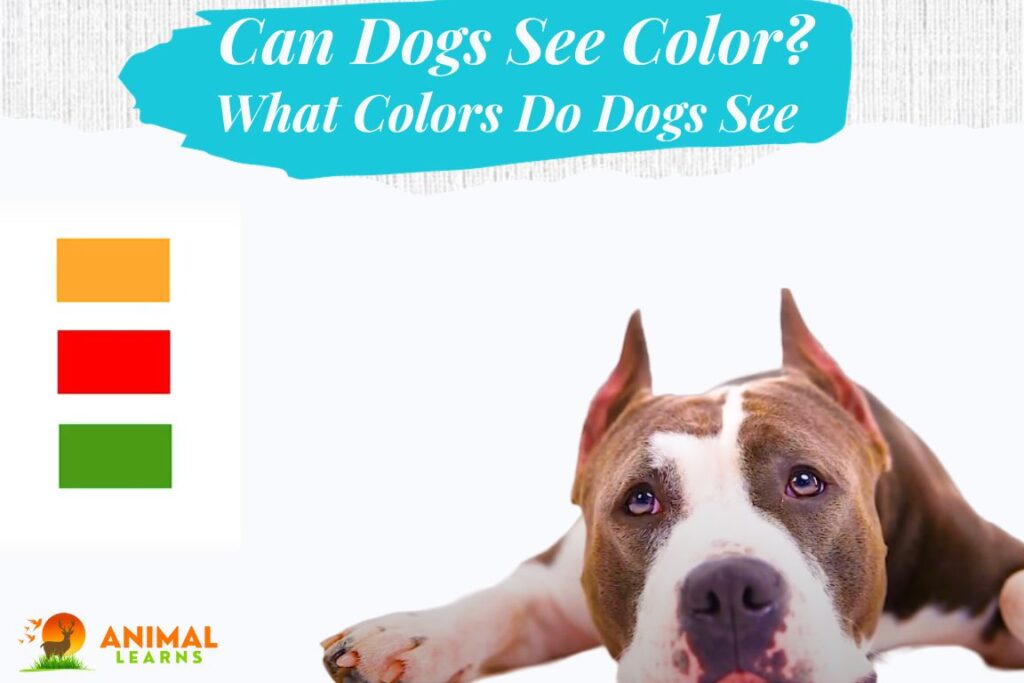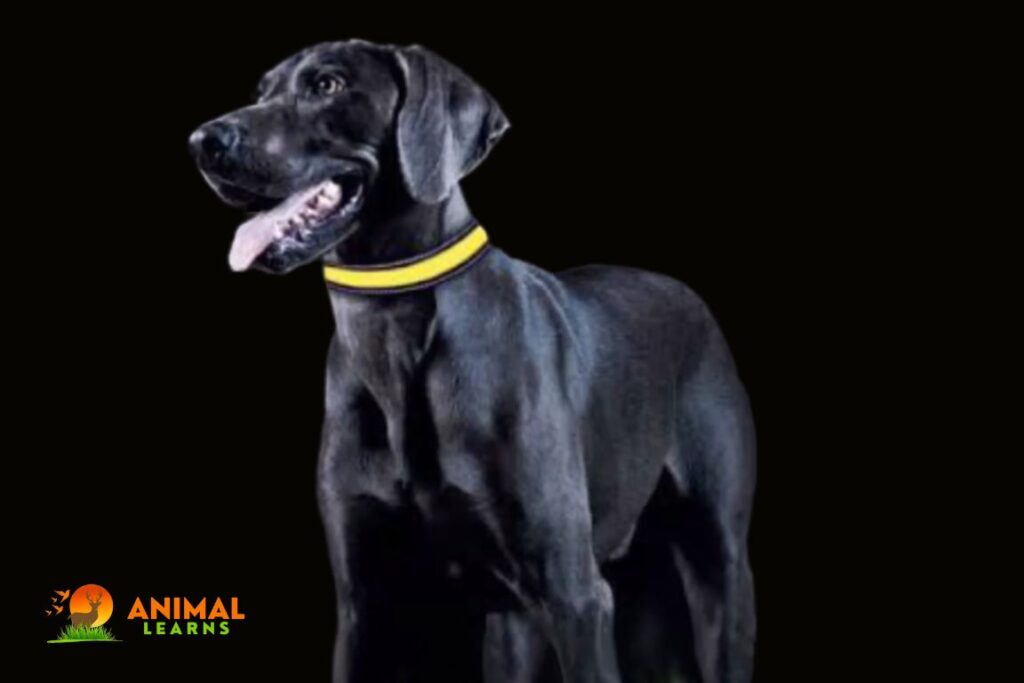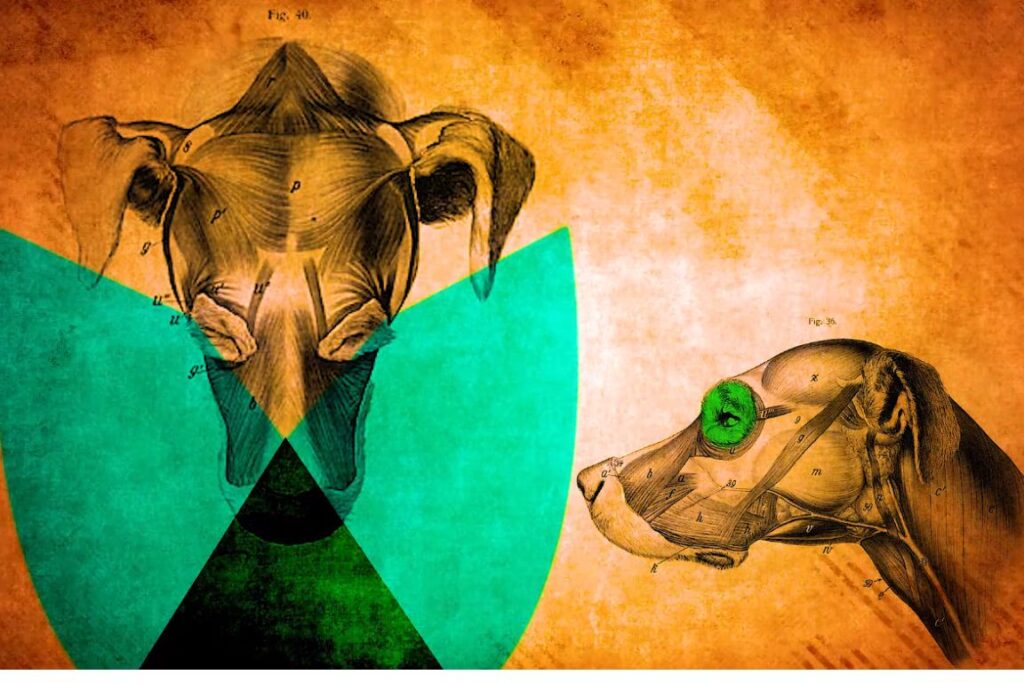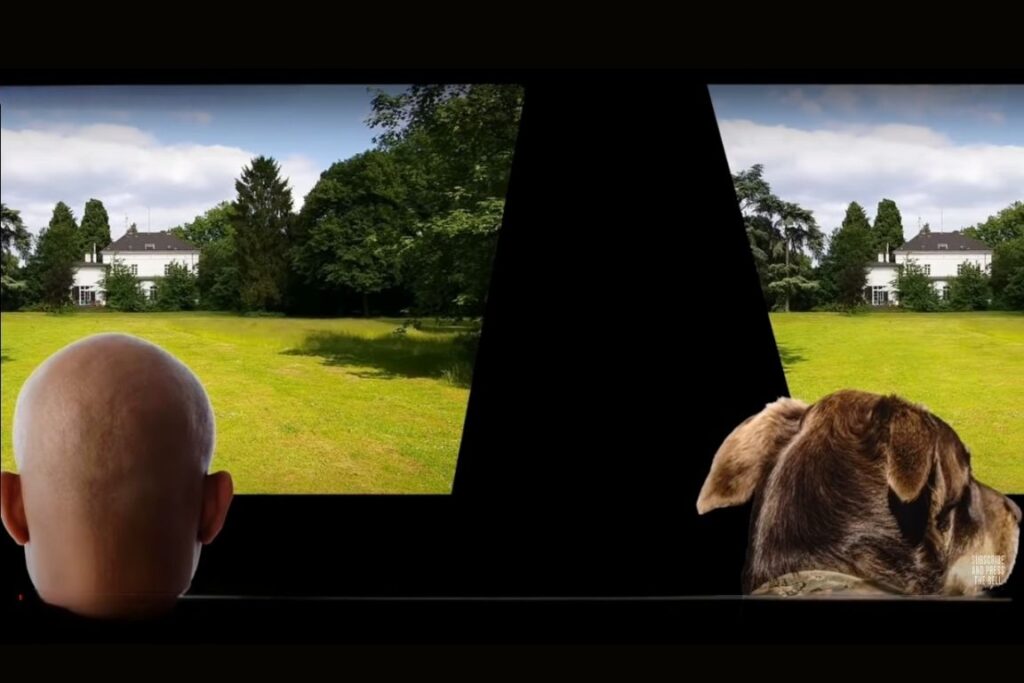Can Dogs See Color? What Colors Do Dogs See

The question of “Can dogs see color?” arises due to the fact that their vision is dichromatic, mostly limited to blues and yellows. Choosing clothing and interior design based on personal preferences is influenced by our innate attraction to colorful spectrums.
Recent research into canine anatomy and behavior has debunked the age-old belief that dogs perceive the world exclusively in black and white. Dogs are not limited to grayscale existences, even though they may not see Technicolor brilliance.
Although the TikTok trend uses a dog vision filter that reveals a world of shades of blue, yellow, and gray—colors that can be perceived by dogs—it does not exactly replicate their unique vision.
Dogs can distinguish blues and yellows, but not reds and greens, in 1989, ophthalmologist Jay Neitz refuted the myth that they could only see in black and white.
Colors can be seen by dogs, but their visual perspective remains a mystery, since their eye anatomy and photoreceptor distribution differ greatly from those of humans, making their vision operate differently.
The color-vision spectrum of dogs differs significantly from that of humans, but they do perceive certain colors.
Color blindness, color perception, and the vibrancy of the world dogs navigate prompt questions about a dog’s vision. Dogs do see color, but their spectrum is less than that of humans, despite the myth that they see only in black and white.
Due to the increased rods and cones in their eyes, they are able to see motion and at night better, but cannot see all the colors we see.
Are Dogs Colour Blind?
Contents
- 1 Are Dogs Colour Blind?
- 2 Color Blindness in Dogs: Fact or Fiction?
- 3 How Do Dogs See Colors?
- 4 What Colors Can Dog See?
- 5 The Influence of Breed and Individual Differences
- 6 Can Dogs See Color in the Dark?
- 7 Color Preferences in Dog Toys
- 8 Fun Facts About Dog Vision
- 9 Practical Implications for Dog Owners
- 10 Can Dogs See Color Like Humans
- 11 Can Dogs See Themselves In A Mirror
- 12 FAQs

There is a myth about dogs being color blind. Dogs can see color, but they do not see it the same as humans do. We can see a wide range of colors with three types of cones in our eyes.
Unlike humans, dogs have only two types of cones in their eyes, meaning that they can only see a narrow range of colors.
Because dogs have two types of cones in their eyes, they are sensitive to both blue and yellow light. They can thus discriminate between green and blue hues, but cannot distinguish between blue and green hues.
In other words, dogs can see a variety of colors, even if they cannot appreciate the full spectrum of colors that humans can. This helps them find food, avoid predators, and communicate with each other.
Color Blindness in Dogs: Fact or Fiction?
It is important to note that dogs are not color blind in the same way that humans are. Humans can see three colors: red, green, and blue. Dogs, however, only see two colors: blue and yellow.
Dogs are not able to see the full spectrum of colors that humans can. However, they are still able to distinguish between different shades of blue and yellow.
How Do Dogs See Colors?

Dogs are capable of seeing some colors, even though they can’t perceive them as clearly as humans do. The popular misconception that dogs can see only black, white, and shades of gray is inaccurate.
We can see this because both humans and dogs have two main types of retinal cells – rods and cones – that detect light levels and motion and help us distinguish colors.
There are three types of cones in the human eye, allowing us to distinguish red, blue, and green combinations.
In contrast, dogs only have two types of cones, so they can distinguish only blue and yellow. Therefore, they are blind to red-green colors.
What Colors Can Dog See?

The dog has dichromatic vision, meaning that it can only see two colors: blue and yellow. The human eye has three types of cones, whereas dogs’ eyes have only two types.
Human eyes can see a wide range of colors by combining red, green, and blue cones. While dogs can see a limited range of colors, they can only combine blue and yellow.
The Influence of Breed and Individual Differences
There are some differences between breeds and individuals when it comes to dogs’ dichromatic vision, meaning they can only see two colors in general.
Genetic factors likely contribute to the difference between some dogs’ ability to see red and green better than others, while others may have a harder time seeing blue.
Can Dogs See Color in the Dark?

| Feature | Description |
| Color vision | Dichromatic (can see blue and yellow) |
| Sensitivity to light | Lighter-colored eyes are more sensitive to light |
| Variation between breeds and individuals | Yes |
| Ability to see colors in the dark | Limited |
No, dogs can’t see colors in the dark. Rods are more sensitive to light than cones, and they are responsible for night vision. Dogs have two types of photoreceptor cells in their eyes: rods and cones.
The cones are responsible for color vision, however, they must be lit up in more light to function. In the dark, dogs are unable to see color.
Because dogs have more rods in their eyes than humans, they can see better in the dark. The tapetum lucidum is a reflective layer on the back of their eyes that helps them see in dim lighting. It reflects light back onto the rods, enabling them to see better in dim surroundings.
A dog’s eyes glow in the dark because of the tapetum lucidum. Some of the light that enters the eye is reflected out by this tapetum lucidum, sending a green or red glow into the eye.
Color Preferences in Dog Toys

The color of a dog’s toys may vary depending on their individual preferences, but there are some general guidelines to follow.
- Unlike humans, dogs have a dichromatic color vision system, which means that they see only blue and yellow, so they see red, green, and orange as shades of gray.
- Toys that contrast with the surrounding environment are more appealing to dogs. For example, blue toys are easier to spot in green grass, while yellow toys are easier to spot in water.
- It is also possible that dogs prefer toys based on their texture, smell, or sound, such as a squeaky toy or a non-squeaky toy.
Fun Facts About Dog Vision

- In contrast to humans, dogs have a wider field of vision. This means they can see more of what is around them without having to move their heads.
- It is because dogs have more rods than cones in their eyes, which allows them to see in low light better than humans. Rods are responsible for seeing in low light, while cones are responsible for seeing in color.
- It is also possible for dogs to see UV light, which means that they can see things that humans can’t, such as a dog’s urine markings.
Practical Implications for Dog Owners
- Think about the color of the toy and its surroundings when choosing toys for your dog. If you want to use your dog’s toy outside in a park, choose a blue or yellow toy that will contrast with the green grass.
- You may have to be patient with your dog if they do not seem to be interested in a new toy. It may take them some time to get used to it.
- To prevent your dog from getting bored and chewing on inappropriate items, make sure to provide them with a variety of toys.
- When your dog is playing with a toy, observe their body language. If they appear frustrated or uncomfortable, take the toy away so you can try something else.
Can Dogs See Color Like Humans

| Color | Human Vision | Dog Vision |
| Red | Red | Brownish-gray |
| Green | Green | Yellowish |
| Blue | Blue | Blue |
| Yellow | Yellow | Yellow |
| Orange | Orange | Yellowish |
| Purple | Purple | Blue |
Dogs can detect color despite seeing colors differently from humans. Human eyes have three types of cones, which enable them to distinguish between red light, green light, and blue light.
Dogs have two different types of cones, and thus can only perceive blue and yellow light. As a result, dogs have a more limited perception of color compared to humans.
It is perfectly normal for dogs to see red, green, and orange as varying shades of brown or yellow. Orange shows as yellow, and violet as blue.
Despite not seeing all colors the same way humans do, they are still able to enjoy the whole spectrum of color.
A dog’s vision is much better than a human’s in several ways. Dogs are better at seeing in dim light since they have more rods in their eyes than humans do.
They are also better at detecting movement than people, which is why they can chase squirrels and frisbees so well.
Can Dogs See Themselves In A Mirror

Although dogs can recognize their reflections in a mirror, they can display a number of different reactions. However, can dogs see color?
This remains a subject of ongoing scientific investigation. Mirrors and dogs seem to have a complicated relationship. Dogs seem to be unable to recognize themselves in mirrors, contrary to humans and other primates.
If dogs see the image in the mirror for the first time, they often react as though it is another dog. This is because dogs mostly use scent to distinguish between different creatures, so they could try playing with it, barking at it, or even acting aggressively towards it. As a result of the mirror’s scentlessness, dogs cannot recognize their reflection as another dog.
FAQs
Can dogs see color?
A dog can see blue and yellow, but not red or green. He has two types of cone cells in his eyes, while humans have three.
What colors do dogs see?
A dog cannot distinguish between red and green, so a red object may appear as a dark gray or brown to them. Dogs see the world in shades of blue, yellow, gray, and brown.
Are dogs colorblind?
Humans are trichromats, which means they can see three colors, while dogs are dichromats, which means they can only see two colors.
How does dog vision compare to human vision?
Humans have better color vision than dogs, but dogs have better night vision. They can also detect motion better than humans.
Does dog color vision affect their daily lives?
There is still hope for dogs with limited color vision. While they may have some trouble distinguishing certain colors, they will be able to navigate their environment and find food and water.












